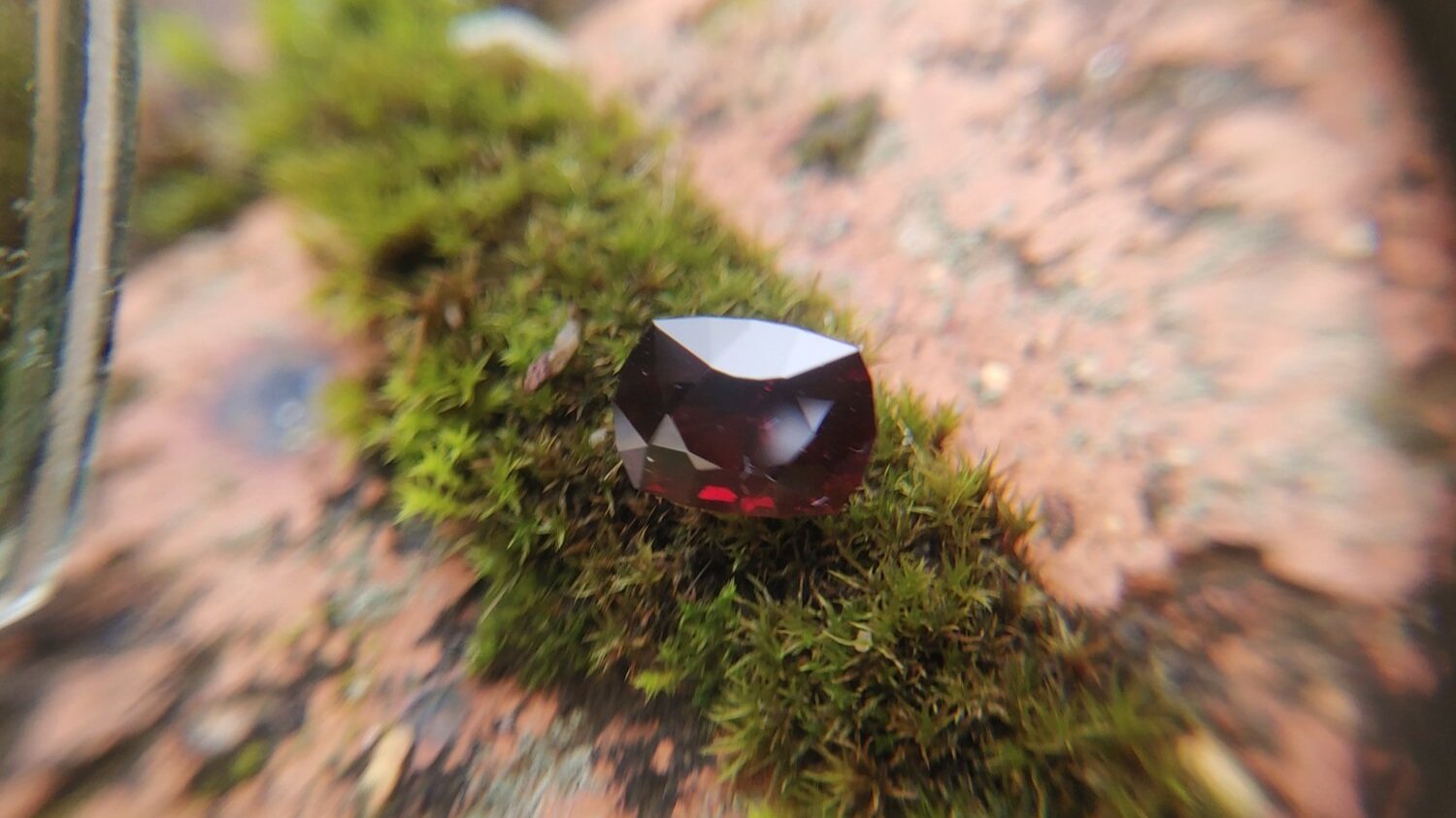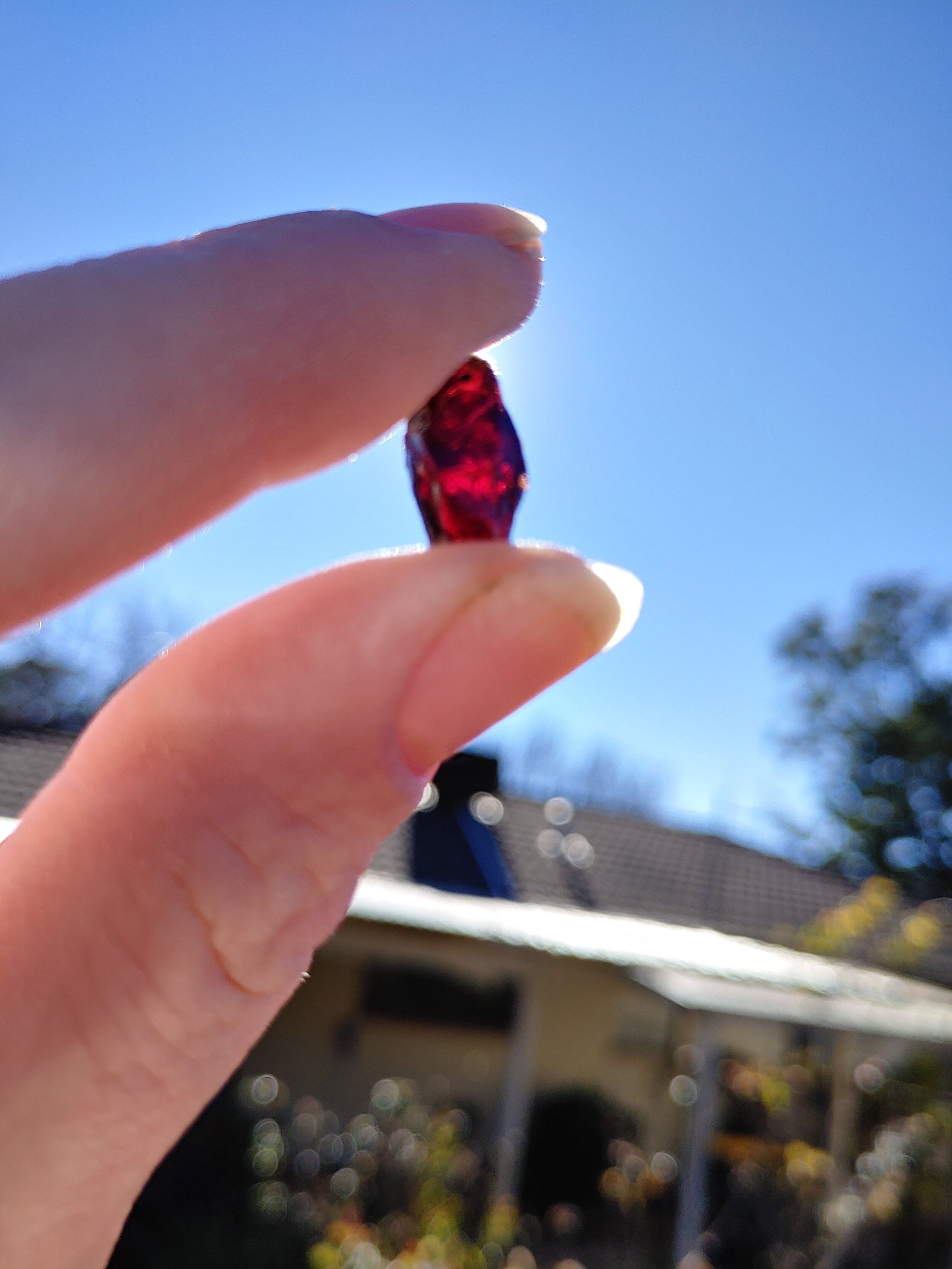
Rough Gems and Their Potential
Getting the best out of a promising stone requires experience and artistry.




A young man named Jaxon found this pyrope-almandine garnet in the Harts Ranges, Northern Territory. With the support and permission of his Mum and grandparents, Jaxon commissioned his prized gem to be transformed into the beautiful piece you see.
See the potential
Allow us to unlock the beauty of a rough gemstone. Natural gemstones have spent millions of years forming underground. It is a great privilege to shape the final form and liberate their beauty.
We are delighted to work with a rough gemstone provided by you. A stone may hold a special sentiment to you, or perhaps you can sense the allure waiting within.
However, not all rough gemstones are suited to gem cutting. Let our expertise guide you. We will assess your stone early in the process and inform you of the best options. We will ask you to provide close-up, well-lit photos of your rough gemstone sitting on white paper.
Here is a zircon. It has many cracks and may shatter during the gemcutting process. This is a very risky gemstone to cut.
Fractures can hide in dark stones, and stones with fractures are risky to cut. Shine a light through them to highlight any cracks.
No cracks here! This dark sapphire is cuttable.
These cloudy features are known as "inclusions" and will negatively impact the sparkle of finished gem.
Regardless, this tumbled amethyst has a suitable portion that we would be happy to cut.
This green sapphire displays brown marks known as "iron staining". This is often easily seen and negatively impacts the colour of a finished stone.
Removing the stain from this stone would produce a smaller gem with a more beautiful colour.
Here is a topaz
. With few flaws and a largely clean interior, this rough gemstone will make a fine piece of art.
What could be gem art?
It’s not just precious stones that can be transformed into art. We have worked with these unassuming materials:
Transparent or translucent stones
Stones with patterns
Glassy “black” or very dark coloured stones
Thick pieces of glass, such as from a vase or chandelier
The minimum size of a rough piece must be at least 7mm on its shortest side, about the size of a green pea. Blocky shapes hold the most possibilities.
If in doubt about your stone, just ask.
Your completed stone will reduce to around 20% of its uncut weight. This is the average yield of the gemcutting industry, however, this figure can vary depending on the design and the rough material itself.
Don’t feel restricted to by your own material. The Gemstone Gallery has a ready collection of rough gemstones, all assessed for quality and ready to cut. Let us find one to match your story.





